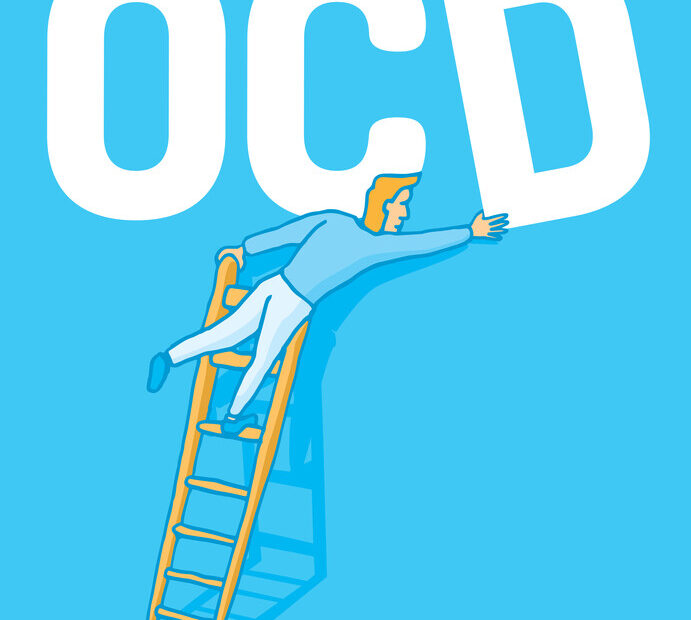A common misconception of Obsessive-Compulsive Disorder is that someone likes to have things clean, they organize items in alphabetical order, or you wash your hands often. But OCD is much more than those things misconceptions. So what it is really?
What is Obsessive-Compulsive Disorder (OCD)?
Obsessive-Compulsive Disorder is a mix of intrusive thoughts that are accompanied by compulsions as response to these. These intrusions can be thoughts, urges, or images and they typically cause the individual to become distressed, anxious, and/or uncomfortable. They have a pattern of being reoccurring and quite persistent for the individual which causes them to ignore the thought or neutralize it by engaging in a certain way.
Compulsions are repetitive actions or behaviors that can present physically or mentally that an individual feels they have to engage in or feel compelled to do. They will engage in these actions or behaviors as a response to an intrusive thought, urges, or images as a way to decrease the distress. An individual that is engaging in compulsions is trying to prevent an event in the future and often times, there does not appear to be a connection to the intrusion and compulsion or it is done excessively. These can take up an hour or more of a person’s day and causes an increase in distress and impairs their ability to function in many different areas of their lives.
What do Intrusive Thoughts / Urges / Images and Compulsions Look Like?
As mentioned previously, an intrusion can be in the form of a thought, urge, or an image. There are actually many subtypes of OCD that people might not realize and some of those are: Harm OCD, Sexuality OCD, Relationship OCD, Real Event OCD, Pedophile OCD, Pure-O OCD, Scrupulosity/Religious OCD, Hit and Run OCD, Contamination OCD, Symmetry OCD, Just Right OCD etc. With these different subtypes, they may be accompanied by images related to harming someone, uncomfortable and inappropriate thoughts towards or about somebody, or the urge to do an action that might be distressing.
Compulsions are behaviors or actions that we feel we absolutely have to do or feel that we’re compelled to do because of the fear of what the outcome might be if we don’t. Compulsions can manifest physically as in having touch an object or surface a certain number of times or mentally as in having to replay an event repeatedly. The goal of a compulsion is to eliminate or decrease the distress that is created by the intrusive thought, urge, or image. There are times where an individual may feel the need to even have others in their life engage in the compulsion to further “eliminate” the possibility of the feared outcome.
How Can I Tell If I Might Be Experiencing OCD?
Some things that an individual might experience with OCD that they can look out for is how sticky thoughts, feelings, and/or urges are. Another experience one might have is noticing a pattern or increase in frequency of these intrusions and how often they feel they need to engage in a repetitive behavior. Often times individuals will begin to doubt themselves, their personality, their decisions, etc. which is also why OCD is called the “Doubting Disorder”. You may notice an increase in avoidance behaviors such as not attending a gathering because “what if I have the thought of XYZ?”
What Does The Treatment For OCD Look Like?
The treatment that is recommended for OCD is called Exposure and Response Prevention or ERP for short. With Exposure therapy, the goal is to work on identifying the intrusions, the compulsions, and the distress level that these bring to the individual. This is what is called creating a hierarchy of triggers. This allows the individual and their treatment team to work on identifying the most realistic place to start with exposures.
The goal for ERP is to allow the gradual process towards these distressing and uncomfortable intrusions and compulsions so that the individual doesn’t get overwhelmed too quickly. There are 2 types of exposures that one can engage in: Imaginal and In-Vivo exposures. Imaginal exposures often involve writing out intrusive thoughts, worst case scenario writings, or they can be visualizing an individual reacting the opposite way to an intrusive thoughts. In-Vivo exposures involve engaging in an exposure that has one going into the real world, such as going to a store that has been avoided due to the fear of having an intrusive thought in this location.
Cognitive Behavioral Therapy (CBT) accompanies Exposure and Response Prevention by helping the individual identify their thoughts, feelings, and behaviors and how these continue the cycles of OCD. CBT also uses the here-and-know instead of using the past due to the idea that we are not able to change things from the past but do have more control in the present moment. By being able to identify these 3 things, we are then able to work on reframing them or challenging our behaviors which leads to a change in a negative cycle.
Next step
Phone us or send us a message if you would like to meet with an Ardent Counseling Center therapist to assess if you are suffering from OCD. If you are, they can also provide the necessary treatment plan as described above. It is important to seek treatment soon as success if more likely to be easily achieved if you do this. If you have had OCD for a while, it may take a little longer to rectify.

